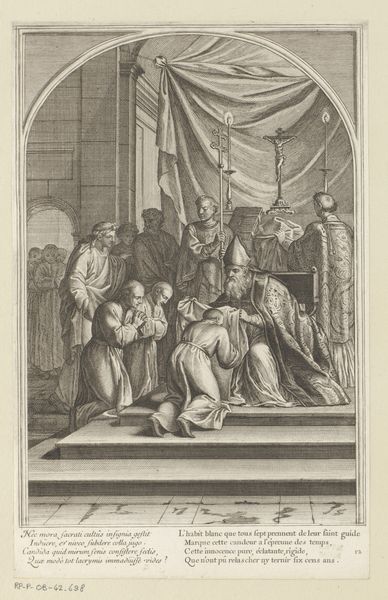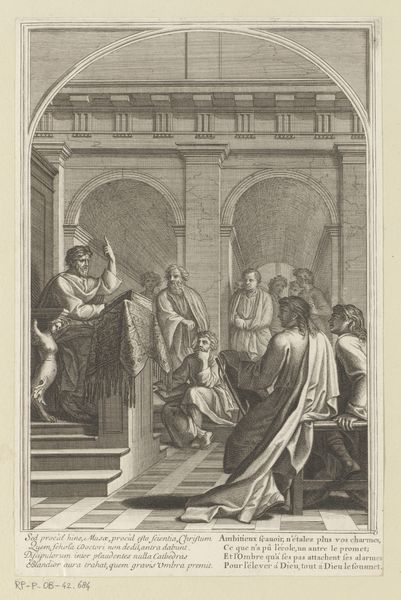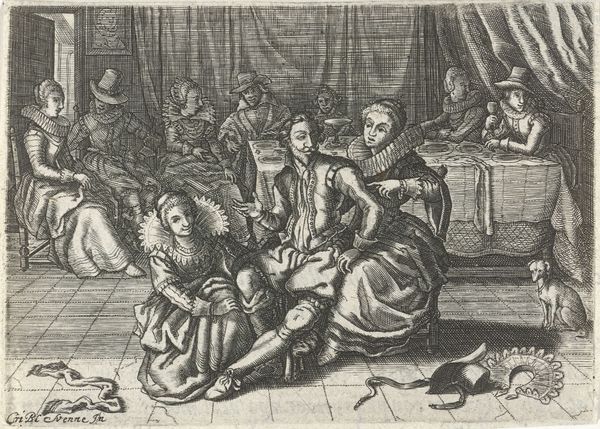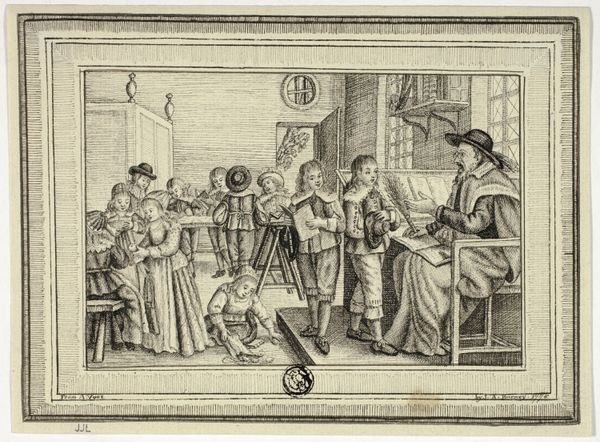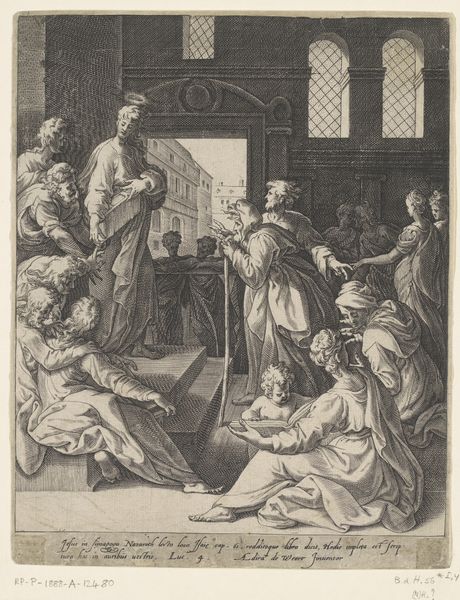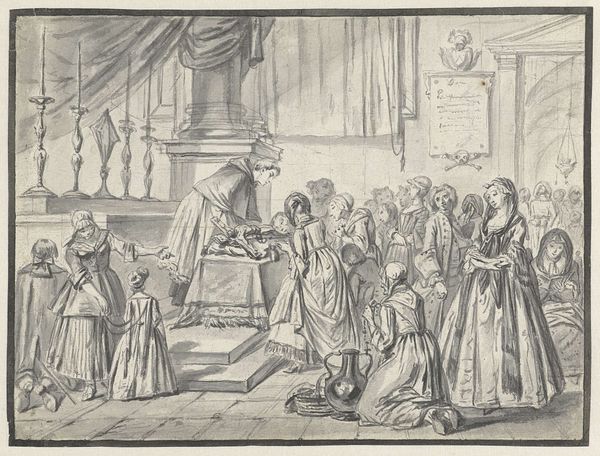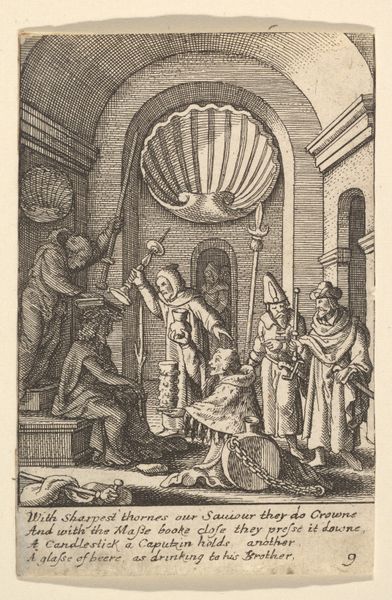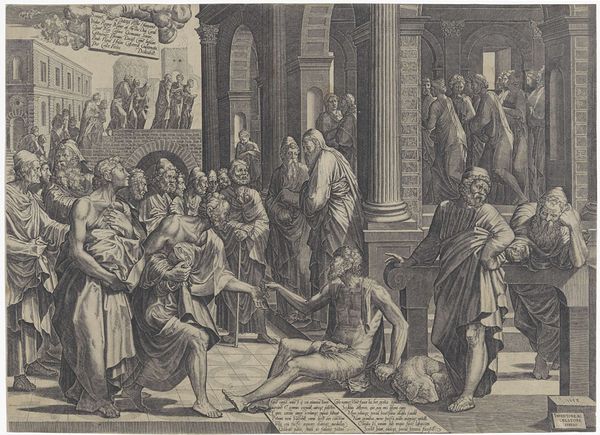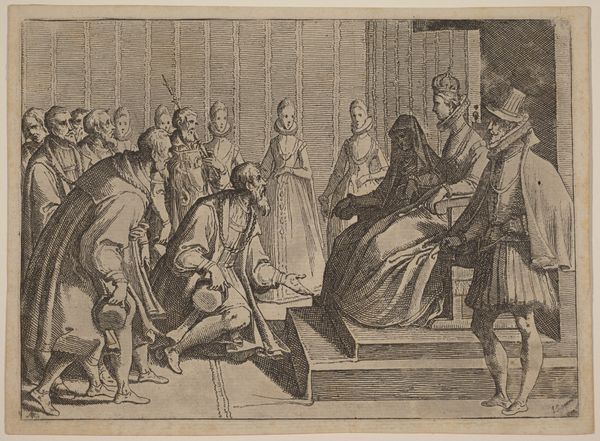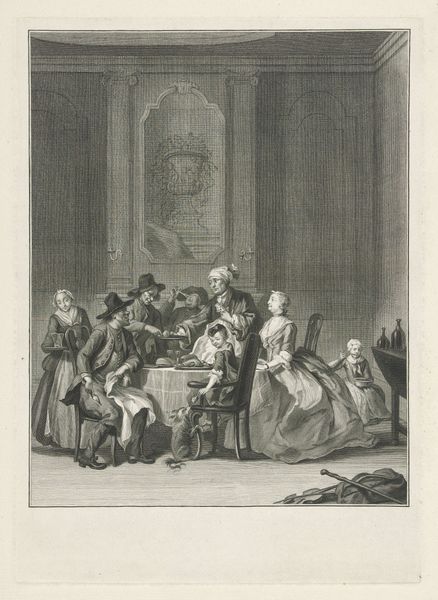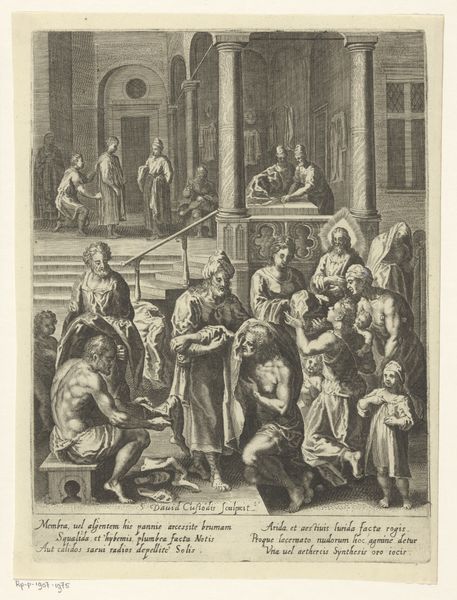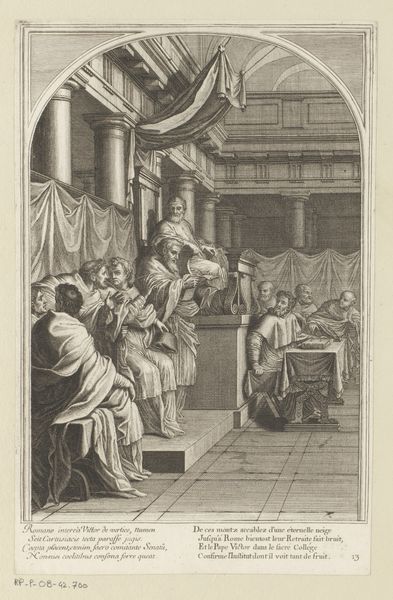
Valdemar den Store bliver forbundet i Absalons moders hus, hvor han har søgt tilflugt efter overfaldet i Roskilde 1821 - 1840
0:00
0:00
painting, oil-paint
#
portrait
#
painting
#
oil-paint
#
oil painting
#
romanticism
#
history-painting
#
academic-art
Dimensions: 112 cm (height) x 101 cm (width) (Netto)
Curator: Peter Raadsig painted this scene, "Valdemar den Store bliver forbundet i Absalons moders hus, hvor han har søgt tilflugt efter overfaldet i Roskilde," sometime between 1821 and 1840. Editor: The mood here feels subdued, despite the implied violence. Everyone is posed and the color palette is reserved, but the material details of fabrics, metals, and wood, feel well described. Curator: Raadsig used oil paint, carefully layering it to create a sense of depth. Notice the subtle details in the depiction of Valdemar's robe, versus the rougher rendering of the interior's woodwork. The availability, use and layering of these pigments tells its own historical story about production and its values in Danish society at the time. Editor: And the symbols throughout reinforce that narrative. We have the crown, the armor, the sword... these aren't just material objects but symbols of power and authority at a turbulent point in Valdemar's reign. Note also how Raadsig frames Valdemar with members of the clergy - that could signify divine right or a connection to religious iconography. Curator: It's intriguing how the artist uses the garments of these figures to communicate status. The humble wool of the cleric and the elaborate, probably imported velvet of the king. A clash in texture, signaling hierarchy! The brushstrokes really capture how textiles, produced through human labour, both reveal and conceal societal dynamics. Editor: Yes, look at the position of the kneeling woman. Her gesture, offering a sword hilt-first, is highly symbolic; possibly an offer of loyalty after violence or treachery. But even more so that subtle downward glance from Valdemar as if considering all these visual inputs. Curator: It all prompts the question: who made these materials, who benefited? Raadsig subtly directs our gaze towards understanding how social narratives were literally constructed via the tools and techniques available to a limited set of skilled artists. Editor: Absolutely. While this piece clearly celebrates Valdemar, through iconography and production techniques that revere and idealize the royalty, we can see hints of societal friction baked into the narrative. Fascinating.
Comments
No comments
Be the first to comment and join the conversation on the ultimate creative platform.
